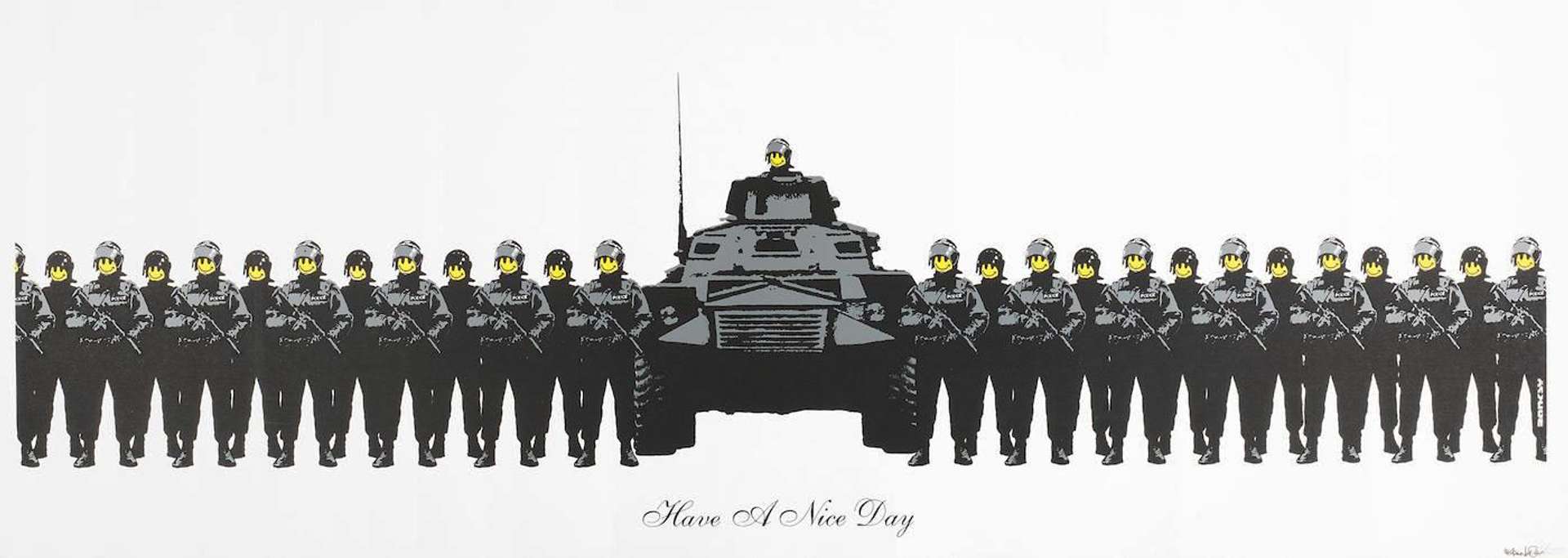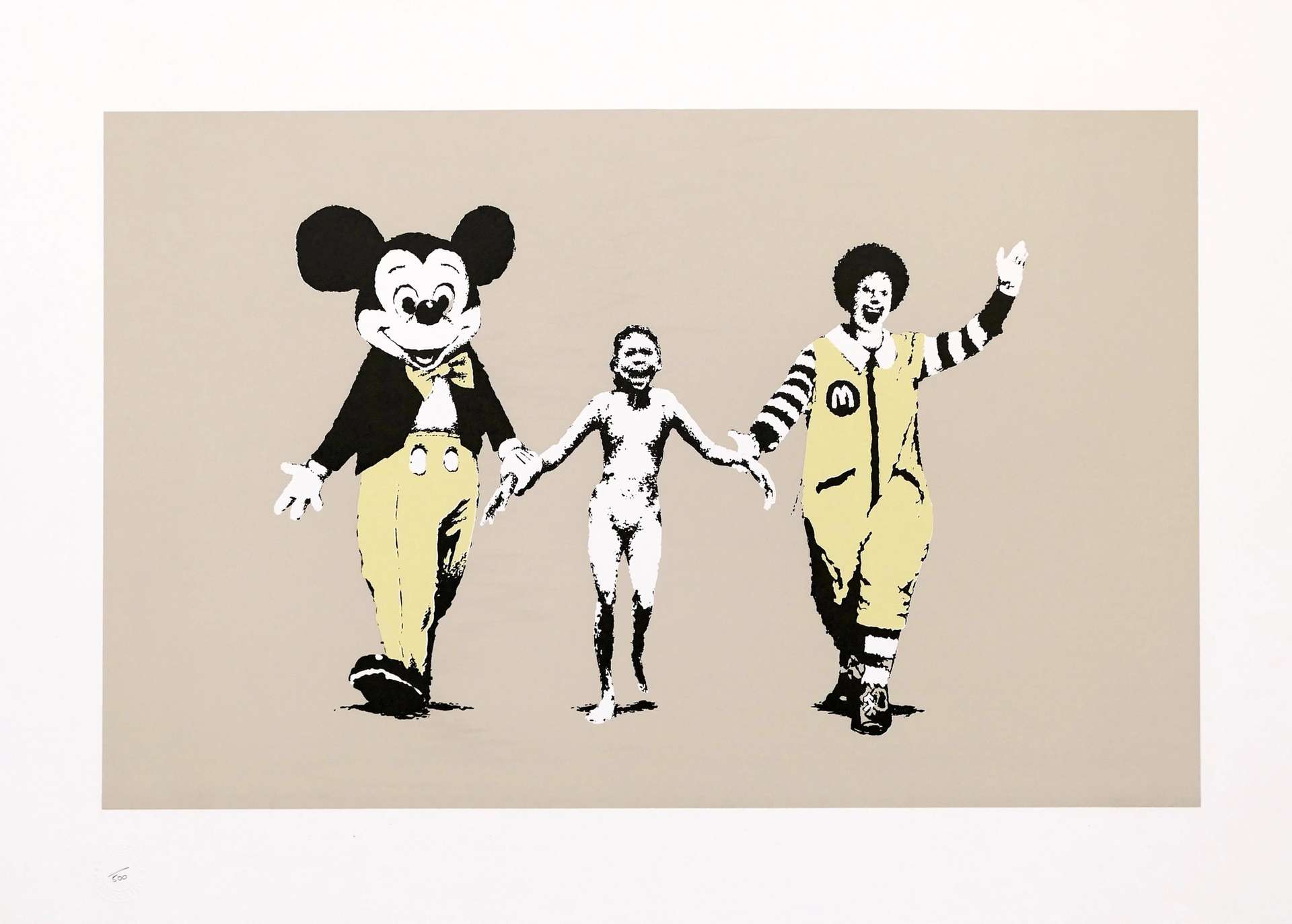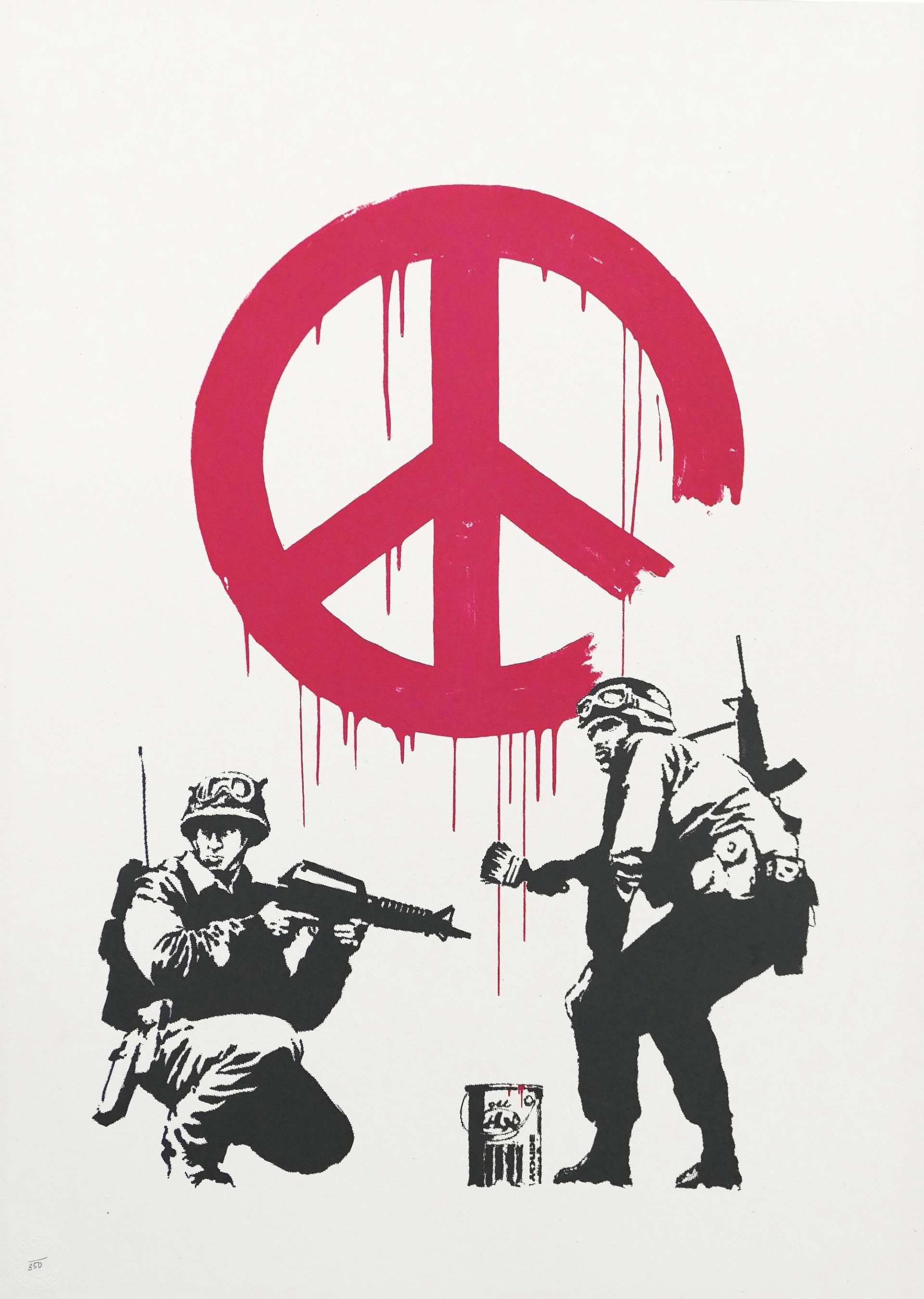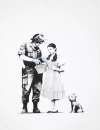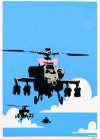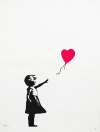CND
Soldiers
One of Banksy’s most notorious anti-war works, and inspired by an actual protest, led by Brian Haw, Banksy’s CND Soldiers first appeared in Parliament Square in 2003. Two years later, Banksy released the prints, in 2 large editions: signed and unsigned. It is one of the street artist stroke activist’s searingly topical works, referencing the UK’s involvement in the Iraq war, which had only recently come to light, along with the revelation that many soldiers protested the intervention, only to be ignored.
Banksy CND Soldiers for sale
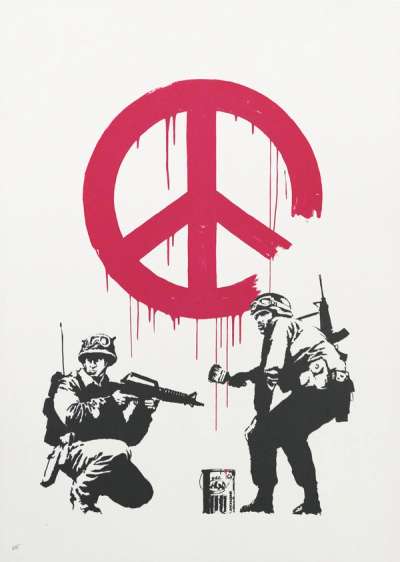
£10,500-£15,000
$20,000-$29,000 Value Indicator
$18,000-$26,000 Value Indicator
¥100,000-¥140,000 Value Indicator
€12,500-€18,000 Value Indicator
$100,000-$150,000 Value Indicator
¥2,000,000-¥2,850,000 Value Indicator
$13,000-$19,000 Value Indicator
TradingFloor
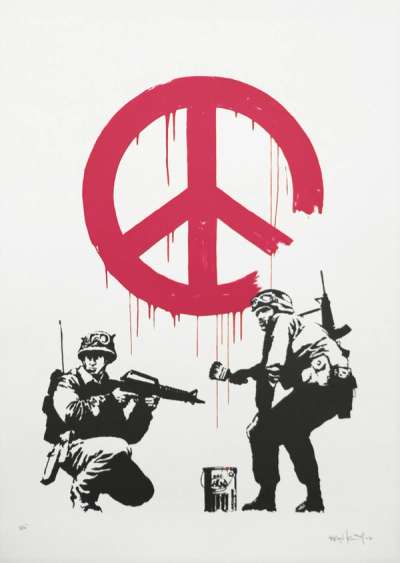
£22,000-£35,000
$45,000-$70,000 Value Indicator
$35,000-$60,000 Value Indicator
¥200,000-¥320,000 Value Indicator
€26,000-€40,000 Value Indicator
$220,000-$340,000 Value Indicator
¥4,190,000-¥6,660,000 Value Indicator
$28,000-$45,000 Value Indicator
TradingFloor
Sell Your Art
with Us
with Us
Join Our Network of Collectors. Buy, Sell and Track Demand
Meaning & Analysis
One of Banksy’s most notorious anti-war works, CND Soldiers first appeared outside the houses of Parliament during a 2003 anti-war protest. A limited edition silkscreen print was then released by Pictures on Walls of London in 2005, in an edition of 350 signed, and 350 unsigned prints.
This Banksy print was inspired by an anti-war protest led by Brian Haw, an English peace campaigner who lived for a decade in the Westminster peace camp. At the time the UK’s involvement in the Iraq war had been brought to light, and the fact that millions of people, including soldiers, protested against the invasion was reportedly ignored.
The work depicts two soldiers painted in the artist’s black and white stencil trademark style on a monochromatic background. Whilst one soldier holds a machine gun on lookout, the other is painting a large peace symbol in red paint – the only coloured element in the image. The satirical juxtaposition of soldiers and their guns alongside the iconic peace sign is intended to make the viewer question the army’s role of of ‘keeping the peace’.
Questioning the validity of the ‘nanny state’ is a central theme in Banksy’s work. The red peace sign originally symbolised the British Campaign for Nuclear Disarmament (CND) of 1957 and is now widely known as an international symbol of peace. Banksy’s inclusion of it here, painted in dripping red paint, overtly evokes the bloodshed of war. Further contrasts are drawn as the soldiers, who act on behalf of the government, are now represented as activists and vandals, graffitiing the wall in protest.
CND Soldiers is yet another artwork by Banksy which questions the grounds of authority, freedom and speech and highlights the media’s trivialization of warfare. Among other works that do the same are Applause, Bomb Hugger, Happy Choppers and Have a Nice Day.
